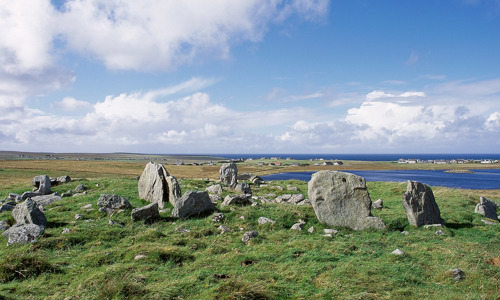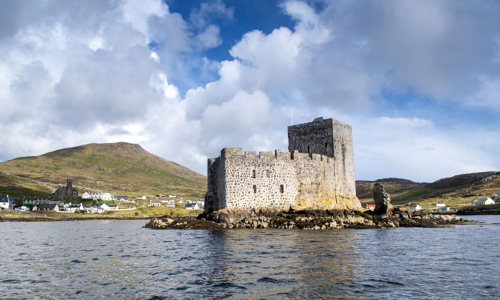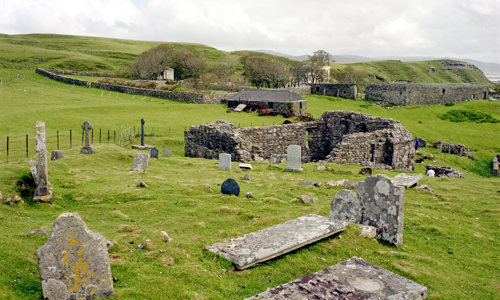History
St Clement’s Church, or Tur Chliamainn, was built in the early 1500s, founded by Alasdair ‘Crotach’ MacLeod of Dunvegan and Harris, 8th Chief of MacLeod.
It was built as the burial place of the MacLeod Clan. When Alasdair died in 1547, his body was laid to rest in St Clement’s, in a splendid tomb he had built on the south side of the choir in 1528.
His son, William, 9th Chief, was buried in another fine tomb in the nave in 1552. A third effigy used to be in the south transept but is now in the nave. It may be that of John MacLeod of Minginish, 10th Chief, who died in 1557.
The church contains an unparalleled collection of later medieval and post-reformation sculptures, and the finest of these is the MacLeod tomb. The arched recess is a riot of carved ornamentation above the effigy of Alasdair himself, dressed in armour and guarded by lions.
Symbolic carvings on Alasdair’s tomb abound:
- the arch represents the arc of the firmament, with god at its apex holding crucified Christ
- the four Evangelists and 12 Apostles stand at either side, with Paul replacing Judas
- within the recess are angels blowing trumpets, more saints and the Virgin Mary flanked by bishops
- a castle, a galley under sail and a hunting scene represent the MacLeods
The grandest of churches
St Clement’s has been described as ‘the grandest medieval building in the Western Isles’.
The church’s status has been the subject of debate. Donald Munro, Archdeacon of the Isles described St Clement’s as ‘a monastery with a steipill’ in 1549, though there is no evidence the church was ever served by a monastic community.
The tower and cross-shaped plan, with transepts to the north and south, are unique in the Western Highlands at this time.
There are sculpted panels on each face of the tower, which stands at the west end of the church:
- a bishop, perhaps St Clement, on the west face
- two fisherman in a boat, perhaps St Peter and St Andrew, on the east face
- a bull’s head on the north face
- a female nude
Iona Nunnery has another, very eroded example. Such ‘sheela na gigs’ were common in Ireland, and it demonstrates the close links between the Hebrides and Ireland at this time.
The church fell into decline at the Protestant Reformation, but was restored and partially rebuilt in the 1700s and 1800s.
















